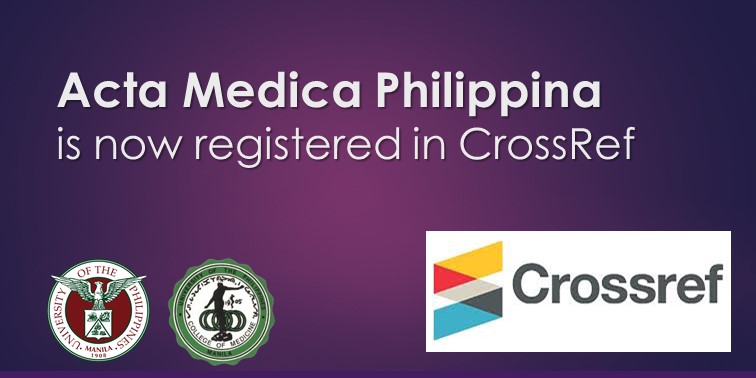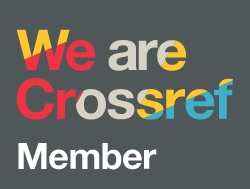The Work is Never Done
DOI:
https://doi.org/10.47895/amp.v59i13.13703Abstract
This is the Neuroscience issue of Acta Medica Philippina. In this issue, a broad range of neuroscience topics are covered: epilepsy, stroke management, endovascular neurosurgery, neuroanesthesia, CNS infections, functional neurosurgery, peripheral nerve trauma, and neurooncology. At the time of this writing, the issue includes two case reports, two case series, a crosssectional study, a bibliometric analysis, one diagnostic accuracy study, and four retrospective observational studies.
The bibliometric analysis caught my attention first. The first bibliographic studies were reported in 1917. The term “bibliometric analysis” did not enter the biomedical literature until 1977 after Windsor published an analysis of the literature in adverse reactions. With progress in library science and the computerization of the literature databases in the past 20 years, bibliometric analyses have become a popular method for exploring and gauging the impact of publication on biomedical scholarship in emerging medical fields. Using this technique, Hernandez and co-authors examine the global research landscape in the field of awake glioma surgery.
Dioquino and co-workers describe the demographic and clinical characteristics of people who use drugs from a population of participants at the UP-PGH National Poison Management and Control Center. The investigators’ use of the liquid chromatography-quadrupole time-of-flight mass spectrometry had uncovered more than just the usual drugs detected by the standard screening kits.
The result of surgery for Hemifacial Spasm (HFS) is reported by Legaspi, Sedano, and Pascual. They describe the technique, outcomes, and complications of 34 patients after microvascular decompression. Khu, Omar, and Pedro do a retrospective investigation of Traumatic Peripheral Nerve Injuries (TPNI) at the Philippine General Hospital. Their analysis on the barriers to ideal TPNI management in the Low/Middle-Income Countries (LMIC) deserves reflection.
High Intensity Focused Ultrasound (HIFU), in the context of neurosurgery, is the technique of using stereotactically guided ultrasound to create lesions in the brain. Jose, Abainza, and Arcinue-Gomez describe their experience with the anesthetic management of the first 30 HIFU patients in the country. In this 30-person cohort, there were 22 with Parkinson’s Disease, six with X-linked Dystonia-Parkinsonism, and two with Essential Tremor. Patients with movement disorders can be anesthetic dilemmas because of the competing needs of having to keep the patients settled and pain-free yet alert enough for adequate neurologic evaluation during the course of the procedure.
There are two stroke articles. The first, by Lanuza and co-workers, is a 5-year retrospective study of the PGH experience with intravenous recombinant tissue plasminogen activator (rtPA) for ischemic stroke. The second is a report by Lukban, Collantes, and Gascon of their initial experience with endovascular thrombectomy in five cases of acute large vessel occlusion.
Santos and co-workers investigate infection. They present a multi-center prospective diagnostic accuracy study describing the utility of using CSF procalcitonin in the diagnosis of bacterial CNS infections. They offer sensitivity and specificity data along with an evaluation of ROC curves comparing the performance of CSF versus serum procalcitonin.
Santos, Orduña, and Salonga-Quimpo identify seizures associated with mild gastroenteritis in 20 pediatric patients. This retrospective descriptive study describes the clinical presentation of these patients. First identified in 1995, this is the first report recognizing this syndrome in the country.
The importance of local health data cannot be overemphasized. There are neurological conditions unique to country. X-linked Dystonia Parkinsonism, first described in the PGH, comes to mind. Ironically, it was investigators outside of the country that first reported its effective response to bilateral pallidal stimulation. How our patients might metabolize medications may differ from foreign populations studied. This could have significant impacts on therapeutics. Furthermore, management solutions worked out in the West may not even be valid in our own health ecosystem. The interplay of health resources, infrastructure, culture, and genetics can easily make interventions developed in a High-Income Country (HIC) inapplicable to our setting.
This infatuation for Western data has been pointed out before. As the burden of neurologic disorders rises, we should not be entirely dependent on HICs to develop our evidence base. In the neurosciences in general, there has been a gap in the research output between developed and developing nations. A recent analysis of neurosurgical randomized trial literature showed that 73% of global clinical trials were supervised and directed by HICs. Only about 27% were led by LMICs. When Chinese research was excluded, only about 9% remained.
UP Manila has taken on the challenge of producing meaningful research and reshaped the biomedical research zeitgeist in the country. I had left the university after having completed my neurosurgical residency in 1990. It is gratifying to see how well the university has encouraged and advanced research in the last 35 years. Still, more research in the neurosciences is necessary to provide the kind of data we need to drive our local evidence base. The work is never done.
Downloads
Published
Issue
Section
License
Copyright (c) 2025 Acta Medica Philippina

This work is licensed under a Creative Commons Attribution-NonCommercial-NoDerivatives 4.0 International License.




.jpg)



